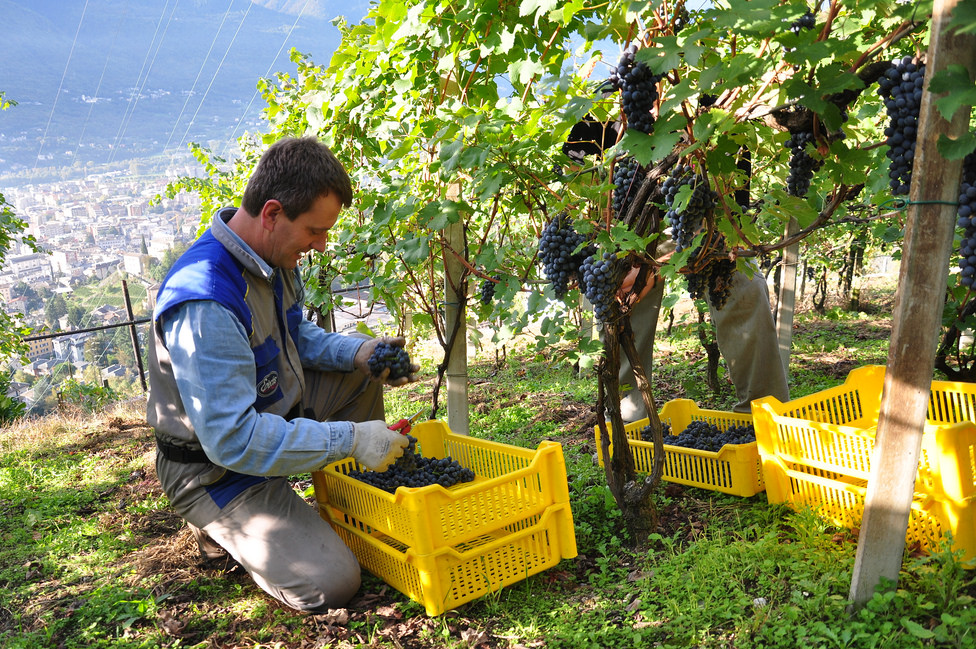
Vintage 2015 Progress Report – Valtellina
2014 brought one of the most difficult vintages for Italy in living memory, with excessive rain, devastating hailstorms and cool conditions making a big impact. Many grapes struggled for ripeness, making the production of the more profound wines, especially red, somewhat more challenging. One year on, and the vintage couldn’t look any more different to its predecessor.
This year, temperatures soared in July, eclipsing even the legendarily hot 2003. In fact, July 2015 was Italy’s hottest month on record. But, unlike 2003, heavy August rains softened the impact of the heat. This rain, coupled with a resumption of summer sun saw positive growth in the vineyards, and, importantly, an absence of disease pressure.
Our man in Milan reports…
The feeling so far is positive. The heat, while at times at near records, hasn't seemed to worry producers that much, especially in areas with good levels of natural hydric resources. There was some hail damage in Piemonte and Veneto due to summer storms but it was very localised and not wide spread. In some northern regions, Friuli and Veneto, yields will be contained due to damage last year.
…And discusses the vintage with Alberto Marsetti, Valtellina (2/10):
Picking has not yet started. The grapes are looking good on the vine, uniform ripeness, healthy bunches and good yields. As Alberto points out, the next few weeks will determine the quality of the vintage. This marginal zone is particularly susceptible to the whims of mother nature.
Alberto plans to start picking on the 10th of October. The first grapes to be picked, with rigorous selection, are the grapes for the top wine, the Sforzato. The aim is to have slightly higher acidity in order to maintain a satisfactory acid/sugar balance after the grapes have been dried.
The growing season from budburst to veraison has been almost ideal. Heavy rains at flowering in spring followed by the immediate arrival of hot weather created a brief period of high humidity with a threatening outbreak of oidium. Hard work in the vineyard and subsequent dry weather averted this outcome. Yields were naturally high and potentially above the DOC limits. For this reason, Alberto had to carry out some crop thinning. One of the reasons that crop levels were high is that the density of his vineyards, 5000 plants/ha, is well above the norm of 3000 plants/ha. The reason for this high density is Alberto's conviction that the vine's balance between foliage and fruit is better at this density, resulting in optimum crop ripeness, both physiological and phenolic. In a season like this that has been near perfect, the higher density of vines per hectare will result in high yields per hectare. In years like this, Alberto carries out the crop thinning not as a green harvest, but waits until veraison is complete in order to remove excess bunches. This is to avoid uneven ripening in the still green bunches and, more importantly, to avoid the green bunches becoming too compact, with the risk of berry splitting and excessive humidity within the bunch thereby creating the conditions for an outbreak of grey rot.
In Valtellina, due to the risk of inclement weather, the critical periods are budburst, flowering and the final weeks leading up to harvest. This year, conditions have been perfect both at budburst and flowering. If the weather hangs in for the final pre-harvest critical phase it will be a great year.
The other important factor Alberto highlighted was that while in June and July there was extreme heat during the day, on many occasions 40°C was reached, evenings remained relatively cool, unlike 2003 when the heat was relentless during both daytime and night time, creating good diurnal temperature fluctuations, ensuring the vines did not suffer heat stress. Drought conditions are rare here, as groundwater resources are generally good due to not only winter rains but also water run off from melting snow.
More to come…
- Category:
- Lombardia,
- Nebbiolo,
- Vintage Report,
- Wine
